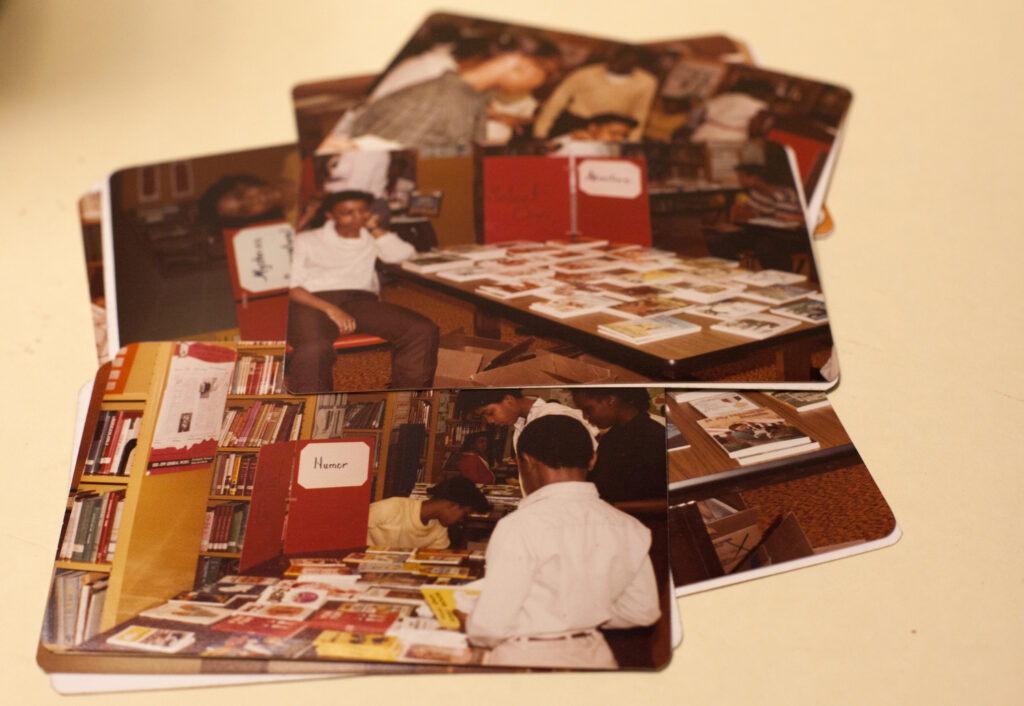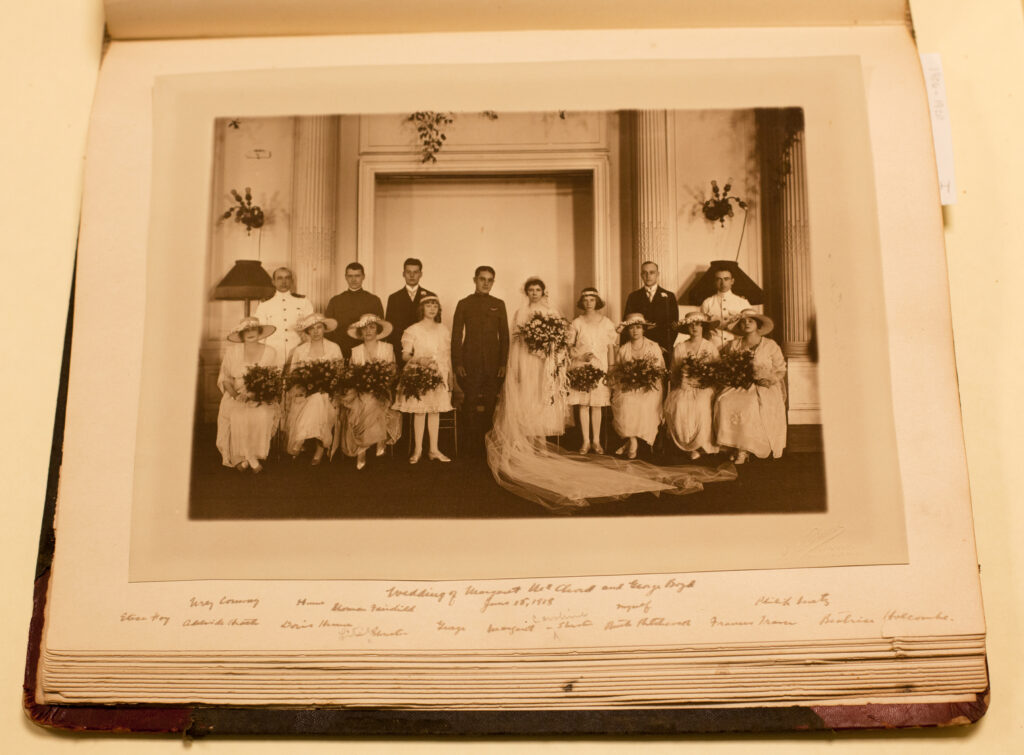In Michelle Caswell and Marika Cifor’s “From Human Rights to Feminist Ethics: Radical Empathy in the Archives,” Caswell and Cifor characterize archivists as caregivers ethically bound to record creators, subjects, users, and communities. By orienting towards an ethic of care, those responsible for collections can recontextualize, restructure, and rewrite old ways of operating.
Indeed, after 130 years of collecting local history, the DC History Center sorely needed to take the time to do exactly that.
Founded as the Columbia Historical Society and later the Historical Society of Washington, D.C., the DC History Center has documented the history of Washington, DC since 1894. Throughout our organizational history, collecting privileged the interests and demographics of its elite, white founders. We needed a fundamental shift in our collections practices. Acknowledging this in our collecting commitments and embedding it in our current strategic plan laid the course. But we realized that to repair these archival silences, we must first understand the extent of their absence. With Caswell and Cifor’s work in mind, we created the gaps analysis project to better understand the demographics of our collections, who they represent, and whose stories remain hidden.

What is a Gaps Analysis?
The gaps analysis was designed to systematically assess the depth and breadth of archival absences within the DC History Center’s collections. When creating the structure of the gaps analysis we were motivated by a central question: Whose stories are we already responsible for, and whose are missing? Using Caswell and Cifor’s philosophy as a guide, we identified three main categories to explore:
Who has donated to our collection?
Who created these records?
And who do those records represent?
In order to resist deeply ingrained colonialism, projects like the gaps analysis require intentionality and care, and should—more than anything else—result in actionable change that disrupts past practices of archival erasure. The conclusions of this study now inform future projects, processing decisions, and collecting priorities, as well as act as an acknowledgement of where we have failed to preserve the histories of our community.

The Process
The conclusions of the gaps analysis are imperfect, but they begin to sketch the shape of the DC History Center’s collections. Over the spring and summer semesters in 2023, Senior Manager of Collections Autumn Kalikin and interns Bridget Scoles and Melody Wang systematically assessed every manuscript collection at the DC History Center. The manuscript collection is the DC History Center’s largest and most diverse collection, encompassing paper-based materials such as correspondence, personal papers, organizational and business records. These collections will sometimes include photographs, maps, and publications as well.
From scrapbooks to school exams, the gaps analysis team surveyed 870 collections by analyzing demographic markers of donors, record creators, and record subjects. Each collection was individually researched, referencing genealogical materials, obituaries, real estate atlases, and other resources. Frequently, the best source for determining creator and subject demographics was the collections themselves. Following these clues, the team attempted to determine the following categories:
DONOR- Ethnicity/Race, Gender, Quadrant, Neighborhood
CREATOR – Ethnicity/Race, Gender, Quadrant, Neighborhood, Religion, LGBTQ+ representation
SUBJECT – Ethnicity/Race, Gender, Quadrant, Neighborhood, Religion, LGBTQ+ representation
ALL RECORDS – Date range

Select Findings
Listed below are some of the significant findings from the gaps analysis. Just like the lives represented within the collection, this information is best represented through narrative. The data in this study is often opaque and uncertain; this is what we can reasonably assume or confirm.
Donors – The Donor category holds the highest percentage of indeterminate results, most often as a result of Found in Collection materials. (Found in Collection materials are collections held in our possession that lack documentation to prove ownership or the source of the object.) A significant number of donors hail from Northwest DC, with high concentrations in Chevy Chase, Downtown, Dupont Circle, Foggy Bottom, and Georgetown. There were more donors from outside of the DMV than from the District itself. Only three collections were confirmed to be from donors located in Southeast DC.
We identified 242 white donors, and 22 Black/African American.
Donor gender is relatively evenly distributed between male and female, when able to be determined. However, we can make the assumption that the Found in Collection materials were probably donated by men, since these tend to be earlier acquisitions, and the membership in the Columbia Historical Society was predominantly male.
Creators – This category was overwhelmingly white, male, and from Northwest DC. Southwest is the least represented quadrant. Only seven collections were confirmed to be created by LGBTQ+ individuals. However, this is where one of the challenges of the gaps analysis is made visible: Our largest and fastest growing collection is in fact the Rainbow History Project archives. However, it’s represented as only one “collection” despite comprising 34 individual collections, all of which are created by LGBTQ+ identifying people.
Subjects – Most of the collections depict men, with over 200 collections representing multiple genders, and one collection representing a trans person. Northwest was represented in almost 500 individual collections—more than half of the manuscript collections. Northeast, Southwest, and Southwest were equally represented with 264 collections representing the entirety of DC. Neighborhoods with the highest representation include Capitol Hill, Columbia Heights, Downtown, Dupont Circle, Foggy Bottom, Georgetown, Judiciary Square, Shaw, Penn Quarter, and Southwest.

The Results are In…
In assessing the conclusions of the gaps analysis, we confirmed quantifiably what we already knew to be true. The DC History Center is a 130-year-old institution started by predominantly white men, with collecting practices that reflected the interests and demographics of its founders. When archives fail to collect the histories of communities of color, they participate in the symbolic annihilation of those communities. The legacy of the DC History Center is deeply interwoven with these practices of archival erasure. It is only by understanding the depths of this harm and in witnessing it, that we can enact intentional transformative justice through ethical collecting practices.
How do we reckon with these archival silences and begin to move towards repair? Part II of this blog series dives into the lessons and challenges of the gaps analysis process, and the ways its conclusions are already informing our work.